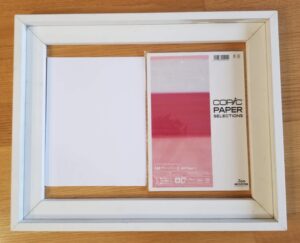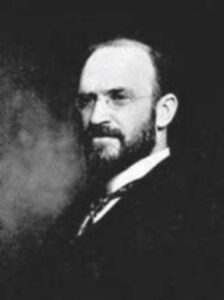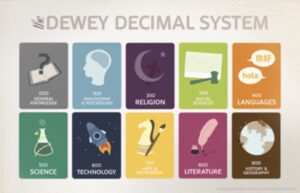Ava M.

The main entrance to the British Library, located on Euston Road, London (Courtesy of Wikimedia Commons)
We all know what it’s like spending time in a library, right?
Or do we?
What about another, perhaps more mysterious creature – the research library?
Research libraries are like their public cousins in that they both house books and other items, and that both types of library require a library card. There, though, the similarities abruptly vanish.
You see, at a research library like the British Library in London, you don’t simply browse the shelves, sign out your tome of choice, and go on your merry way. Really, the experience feels less like being in a library, and more like visiting a highly unusual museum. The British Library contains everything from rare sound recordings to handwritten drafts from artists like JK Rowling (Google Arts & Culture), John Lennon (“New Beatles acquisition at the British Library”), and Samuel Beckett (“Notebook drafts of Waiting for Godot,”). But while many impressive treasures are there for your perusal, it can be quite the journey to reach them.
I was lucky enough to spend several days last year poring over personal letters by Nobel prize-winning playwright Harold Pinter, and I’d like to recount some observations about what navigating this confusing, magical place is like, from getting a library card all the way to interacting with your prized requests. Enjoy this guide to the British Library.
Once you are inside the building, as you gear up to receive your shiny new library card, you’ll encounter your first hurdle. To claim your card, you must first get through an interview of sorts, explaining what you are hoping to research and why.
The interview process at the library became something of a talking point a few years ago. According to The Guardian, the British Library has only allowed adults under 21 to claim cards since 2004, a decision that sparked a heated multi-installment debate in the London Review of Books in 2013, with one disgruntled writer complaining bitterly about the annoying undergraduates in his midst, and the “adolescent antics” they performed. Such antics, it should be pointed out, did not seem to include much more than the simple act of, well, reading (Bury).
Regardless of whether you are one of these exasperating youngsters or not, once you are deemed responsible enough by the interviewers, your picture is taken and your government ID is verified, and you are sent on your way, far down into to the belly of the beast: the lockers.
Here, where you must stow anything not required for your research, the surprisingly energetic atmosphere of the British Library first begins to set in. As people emerge from the locker area, there’s a buzz of excitement in the air. After all, everyone is there to delve more deeply into their interests, to engage with material that they’ve come to this particular place to enjoy. Remember all the excited people down here, as you anxiously double- and triple-check that there are no forbidden pens, highlighters, cough candies, post-it notes or lip balm on your person. You will be one of these enthusiastic people soon.

A view inside of the British Library (Courtesy of Wikimedia Commons)
Once the lockers have been conquered, things get more personalized. Depending on what you’d like to view, you’ll make your way to one of the 11 available reading rooms in the library (“Using our Reading Rooms,” ). I spent much of my time in the Manuscripts Reading Room, which includes everything from illuminated manuscripts to unfinished drafts of famed literature (“Using our Reading Rooms”).
The unique atmosphere of the library increases as you get closer and closer to viewing your long-anticipated documents. In the Manuscripts reading room in particular, a distinct hush settles over the entire space. Everything from requesting new items to making notes is done as quietly as possible. Even the security guards, there to check that you have not smuggled out a leaf of literature history in your bag, practically whisper. The fact that a library has such an experienced thievery-detection team might unnerve you slightly, but you soldier on, clutching the huge see-through bag that holds your few remaining possessions, mere steps away from your goal.
With all this waiting, whispering and outlawing of pens, you might be wondering if this is all worth it. But let me tell you, the moment you finally receive your chosen items, set them in their protective tray, and begin to leaf through them is where the fun really begins. For all your efforts, you will be rewarded with the chance to peruse priceless physical evidence of literary history right up close, with no traditional podiums or protective glass to stand in your way. With no one to shape your perceptions beforehand, you can experience the silently thrilling detective work of sifting through the opinions, lives and work of long-dead and still-living literary greats, all in tangible paper form.
And despite the fairly stern, intimidating initial appearance of the library, the content you can find there is anything but stuffy. You never know what colourful item might help you to see an author you love in an entirely different light. When I perused through Harold Pinter’s many letters to his old friend Henry Woolf, I was delighted to see a passage that challenged the idea of Pinter being a somewhat cool, remote figure, a playwright who says cryptic things like, “I tend to regard the audience as my enemies” (Gussow). In a letter to Woolf from 1957, Pinter bemoans his position as an actor in travelling reparatory theatre, and practically bursts with frustration: “Nine plays out of ten are crap. Managements are crap. And the audiences are the worst crap of all.” Clearly, Pinter’s dislike of audiences wasn’t just a post-fame phenomenon, it seems.
But perhaps the best feeling of all comes when, settled at your table, silent as a mouse, you come upon some scrap of paper, some cluster of sentences, that deepens your understanding of a beloved work. For example, Pinter famously declined to speak in much detail about his plays, but the British Library’s collection of letters from Pinter to his friends and loved ones often offers rare glimpses into his creative process. In a series of letters to his friend Mick Goldstein, the young Pinter mentions his second play, The Birthday Party, a work that would be panned by critics on arrival, only to leap back into the public eye years later. In a letter from April 1957, the sense of Pinter’s excitement about his new work is palpable, as he hints at the plot of the play and joyfully exclaims to Mick, “Playwriting just now has got me by the balls.” In a second letter, dated three months later, Pinter again enthuses about the play to Mick, specifically about the final scene in which protagonist Stanley Webber is hauled helplessly from his home. Here, Pinter’s enthusiasm for his new play is palpable, as when he says, “They come for him, you see, and they take him. In his pyjama jacket.”
One tiny scrap of writing like that, and a long-dead writer is vaulted back to life again. No wonder people seem so eager to cast aside their highlighters and venture inside the British Library.
Works Cited and Consulted
Abrams, Luke. “12 Awesome Things You Probably Didn’t Know About the British Library.” Time Out, 11 October 2016. https://www.timeout.com/london/blog/12-awesome-things-you-probably-didnt-know-about-the-british-library-101116 Accessed November 14 2018.
Bury, Liz. “British Library hush is broken by a row over reading room rules.” The Guardian, 19 July 2013. https://www.theguardian.com/books/2013/jul/19/british-library-hush-row-reading-room Accessed November 16 2018.
Gussow, Mel. “A Conversation [Pause] With Harold Pinter.” New York Times, December 5 1971. https://www.nytimes.com/1971/12/05/archives/a-conversation-pause-with-harold-pinter-a-conversation-with-pinter.html Accessed November 16 2018.
“Harry Potter: A History of Magic.” Google Arts and Culture, date unknown. https://artsandculture.google.com/project/harry-potter-a-history-of-magic Accessed November 16 2018.
“New Beatles acquisition at the British Library.” British Library, 24 May 2013. https://blogs.bl.uk/english-and-drama/2013/05/new-beatles-acquisition-at-the-british-library.html Accessed November 20 2018.
“Notebook Drafts of Waiting for Godot.” British Library, date unknown. https://www.bl.uk/collection-items/notebook-drafts-of-waiting-for-godot-by-samuel-beckett Accessed November 17 2018.
Laing, Olivia. “Quiet, please… In praise of the British Library.” The Guardian, 22 November 2015. https://www.theguardian.com/books/2015/nov/22/quiet-please-in-praise-of-the-british-library-celebration-users-love-it-olivia-laing Accessed November 14 2018.
“Using our Reading Rooms.” British Library, date unknown. https://www.bl.uk/visit/reading-rooms Accessed November 17 2018.
Pinter, Harold. Letter to Henry Woolf. April 1957, Palace Theatre. Harold Pinter Archive, British Library, London, England, Add MS 89094/2. Manuscript.
Pinter, Harold. Letter to Michael Goldstein. April 1957, Playhouse Theatre. Harold Pinter Archive, British Library, London, England, Add MS 89083/1/1/3. Manuscript.
Pinter, Harold. Letter to Michael Goldstein. July 1957, Playhouse Theatre. Harold Pinter Archive, British Library, London, England, Add MS 89083/1/1/3. Manuscript.
Woolf, Henry. “A guest blog by Henry Woolf.” British Library, 3 October 2017.
https://blogs.bl.uk/english-and-drama/2017/10/a-guest-blog-by-henry-woolf.html Accessed November 17 2018.
https://commons.wikimedia.org/wiki/File:Inside_The_British_Library.png
https://commons.wikimedia.org/wiki/Category:British_Library_-_Building#/media/File:The_main_entrance_of_the_British_library1_3_3_2010.JPG






